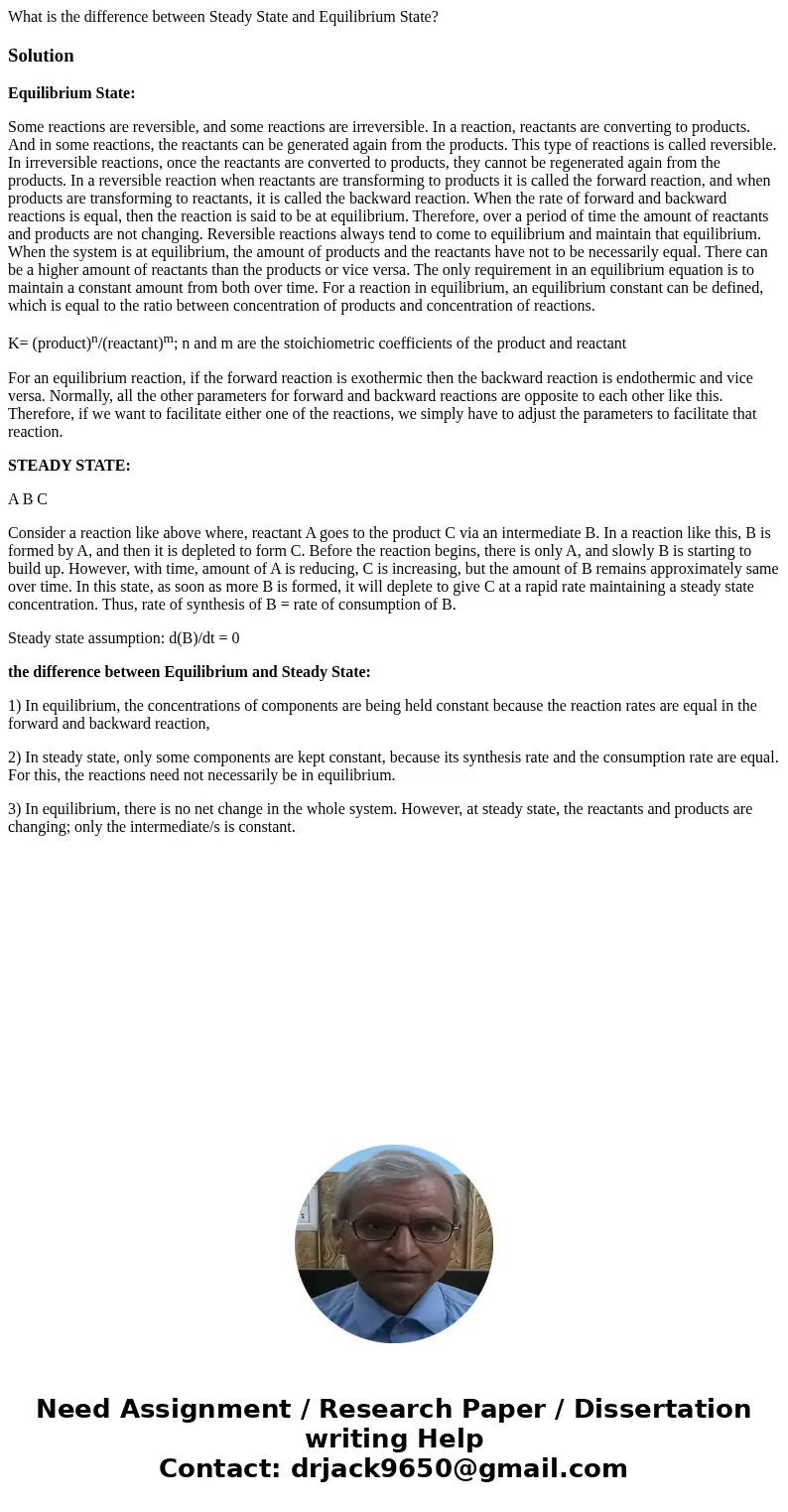What is the difference between Steady State and Equilibrium
What is the difference between Steady State and Equilibrium State?
Solution
Equilibrium State:
Some reactions are reversible, and some reactions are irreversible. In a reaction, reactants are converting to products. And in some reactions, the reactants can be generated again from the products. This type of reactions is called reversible. In irreversible reactions, once the reactants are converted to products, they cannot be regenerated again from the products. In a reversible reaction when reactants are transforming to products it is called the forward reaction, and when products are transforming to reactants, it is called the backward reaction. When the rate of forward and backward reactions is equal, then the reaction is said to be at equilibrium. Therefore, over a period of time the amount of reactants and products are not changing. Reversible reactions always tend to come to equilibrium and maintain that equilibrium. When the system is at equilibrium, the amount of products and the reactants have not to be necessarily equal. There can be a higher amount of reactants than the products or vice versa. The only requirement in an equilibrium equation is to maintain a constant amount from both over time. For a reaction in equilibrium, an equilibrium constant can be defined, which is equal to the ratio between concentration of products and concentration of reactions.
K= (product)n/(reactant)m; n and m are the stoichiometric coefficients of the product and reactant
For an equilibrium reaction, if the forward reaction is exothermic then the backward reaction is endothermic and vice versa. Normally, all the other parameters for forward and backward reactions are opposite to each other like this. Therefore, if we want to facilitate either one of the reactions, we simply have to adjust the parameters to facilitate that reaction.
STEADY STATE:
A B C
Consider a reaction like above where, reactant A goes to the product C via an intermediate B. In a reaction like this, B is formed by A, and then it is depleted to form C. Before the reaction begins, there is only A, and slowly B is starting to build up. However, with time, amount of A is reducing, C is increasing, but the amount of B remains approximately same over time. In this state, as soon as more B is formed, it will deplete to give C at a rapid rate maintaining a steady state concentration. Thus, rate of synthesis of B = rate of consumption of B.
Steady state assumption: d(B)/dt = 0
the difference between Equilibrium and Steady State:
1) In equilibrium, the concentrations of components are being held constant because the reaction rates are equal in the forward and backward reaction,
2) In steady state, only some components are kept constant, because its synthesis rate and the consumption rate are equal. For this, the reactions need not necessarily be in equilibrium.
3) In equilibrium, there is no net change in the whole system. However, at steady state, the reactants and products are changing; only the intermediate/s is constant.

 Homework Sourse
Homework Sourse